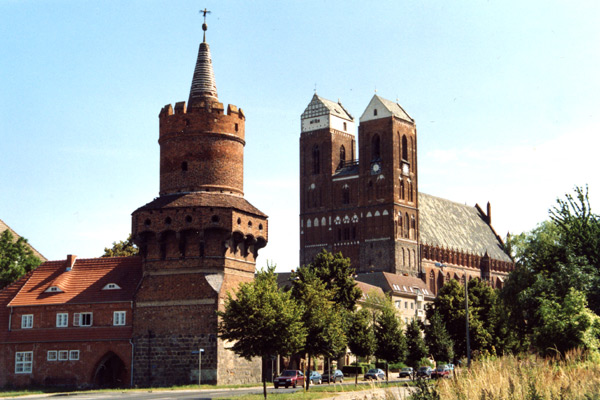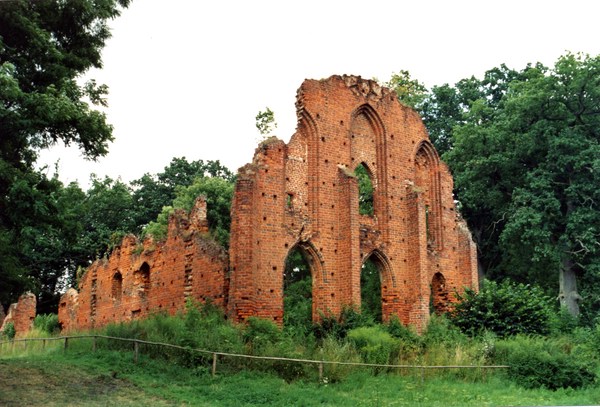First steps to the Uckermark
|
Devrient’s remarks on the family’s early history: “The knights von Arnim left their homeland early. The Elbe line lost its strategic significance to a large part when Albrecht the Bear and his successors had consolidated the German dominion between Elbe and Oder. Settlements by German knights, citizens and farmers followed the militant conquests or diplomatic acquisition of Slavic princedoms in the 13. century. Around 1230, Barnim and Teltow changed owners as the Mark purchased them from (the Slavic tribe) “Wenden”, while Spandau, Berlin and Cölln had become cities. |
|
By the year 1250 the Uckermark (landscape north of Berlin around Templin and Prenzlau), formerly owned by Pommern, had become part of Brandenburg as a result of tedious and dangerous negotiations between the Askanians and Mecklenburg and Pommern. The reason for rather long negotiations was the fact that at that particular geographic location, settlements expanding through the Havelland from Stendal and Tangermünde directly encountered those settlers coming from Mecklenburg. |
Prenzlau in the Uckermark, the Middle-Town gate and church St. Mary |
|
Ruins of the Abbey Boitzenburg in the Uckermark |
The Boitzenburg castle in the Uckermark possibly owes its creation to a dynasty which themselves were from the very same city Boizenburg in Mecklenburg. Other town names like Stendal, Stegelitz, Schönermark, Bertikow, Schönebeck, also Bismarck in Pommern, remind oneself of the Altmark. The city Prenzlau has been founded by Pomeranian Dukes in 1234, but with Stendal citizens as settlers and Magdeburg’s law as basis of the city’s foundation. In the year 1286 we can identify a von Arnim (Hennekinus) in the entourage of the margrave (Markgraf), who appeared as a witness on a certificate issued in the Uckermark to the benefit of the Abbey of Marienpforte just outside Boitzenburg. |
|
Whether the family had been residing in the Uckermark at that time, we are not able to derive from the latter document. In 1554, Otto von Arnim appears to be serving for Mecklenburg, which also led him to Denmark. It is likely that owning land in that area near to the (river) Ucker to which three masters laid claims was the reason for moving towards Mecklenburg. From the Altmark, the Arnim dynasty seemed to have disappeared entirely already (...)” *4) |
|
*1) Werner Konstantin von Arnswaldt: The dynasty von Arnim, Part II., 1. Book, Foreword, published by the family, 1923.
*2) Dr. Ernst Devrient: The dynasty von Arnim, Part II., 1. Book, page 2, published by the family 1923.
*3) Certificate from 1204, taken from: Family chronicle “Das Geschlecht von Arnim, IV. Teil, Chronik der Familie im neunzehnten und zwanzigsten Jahrhundert”, published by the Board of the von Arnim family association, Publishing house Degener & Co., Neustadt/Aisch, 2002, page 42.
*4) Dr. Ernst Devrient: The dynasty von Arnim, Part II., 1. Book, page 4, published by the family 1923.
*5) Excerpt from: Family chronicle “Das Geschlecht von Arnim, IV. Teil, Chronik der Familie im neunzehnten und zwanzigsten Jahrhundert”, published by the Board of the von Arnim family association, Publishing house Degener & Co., Neustadt/Aisch, 2002.
Text: Jasper von Arnim, May 2003
Translated: Henning von Arnim a. d. H. Lützlow, 2010
back to History
back to Our family’s cradle in the Altmark
Go to The three main lines
Go to The Zehdenick main line
Go to The Zichow main line
Go to The Gerswalde main line

